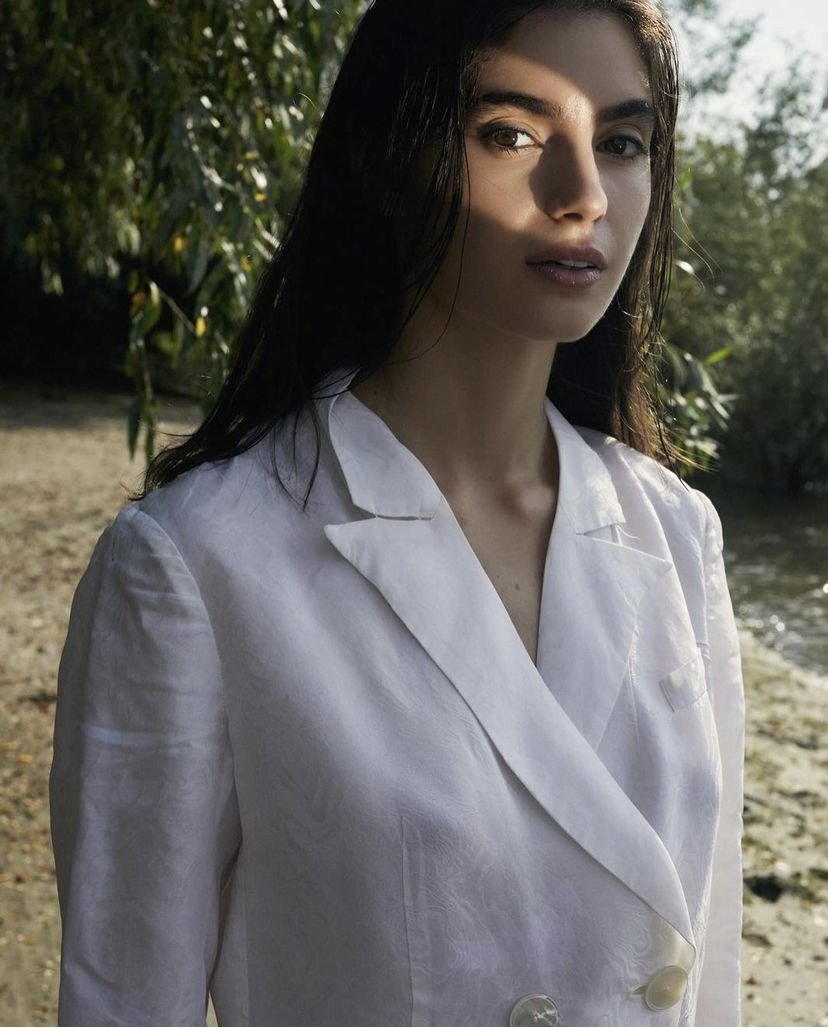About harmony in life with Adela Maria Marius
When I first entered the world of Epretext gallery, I was so enchanted that I literally imagined myself living in such a universe defined by art and creativity. Or I imagined myself working in such an environment. It looked like the ideal workplace. But it took a person to create it. The person behind the project, Adela Maria Marius, is no less surprising. Her sense of beauty, inherited from her family, is what guided her to start curating designers and enter the entrepreneurial world from a very young age. Together with her partner and life companion, Andrei Jecza, himself a gallerist too, she is on a mission to bring art closer to people, so they can interact with it every day. I have an attraction and curiosity for people who not only have great ideas but also have the courage to follow their dreams, so the interview below came naturally.
Tell us about Epretext. How did the idea come up and what is the purpose behind it?
It was just before I graduated from the University of Architecture, in a discussion with my partner about my need to create and to arrange things in harmony. I always had a vision, a sense for style and harmony. I was also lucky enough to witness the behind-the-scenes of a gallery, the hard work, so I knew from the beginning what I would be dealing with, but none of it mattered — since I started to discover artists and designers and fall in love with craftsmanship and beauty, in general. The main core of the gallery was to share this beauty with a wider audience and to realise that the way we live, the way we socialise, we dress, the movies we watch or the jewellery we wear are part of who we are. For me, it’s literally all about a celebration of beauty.
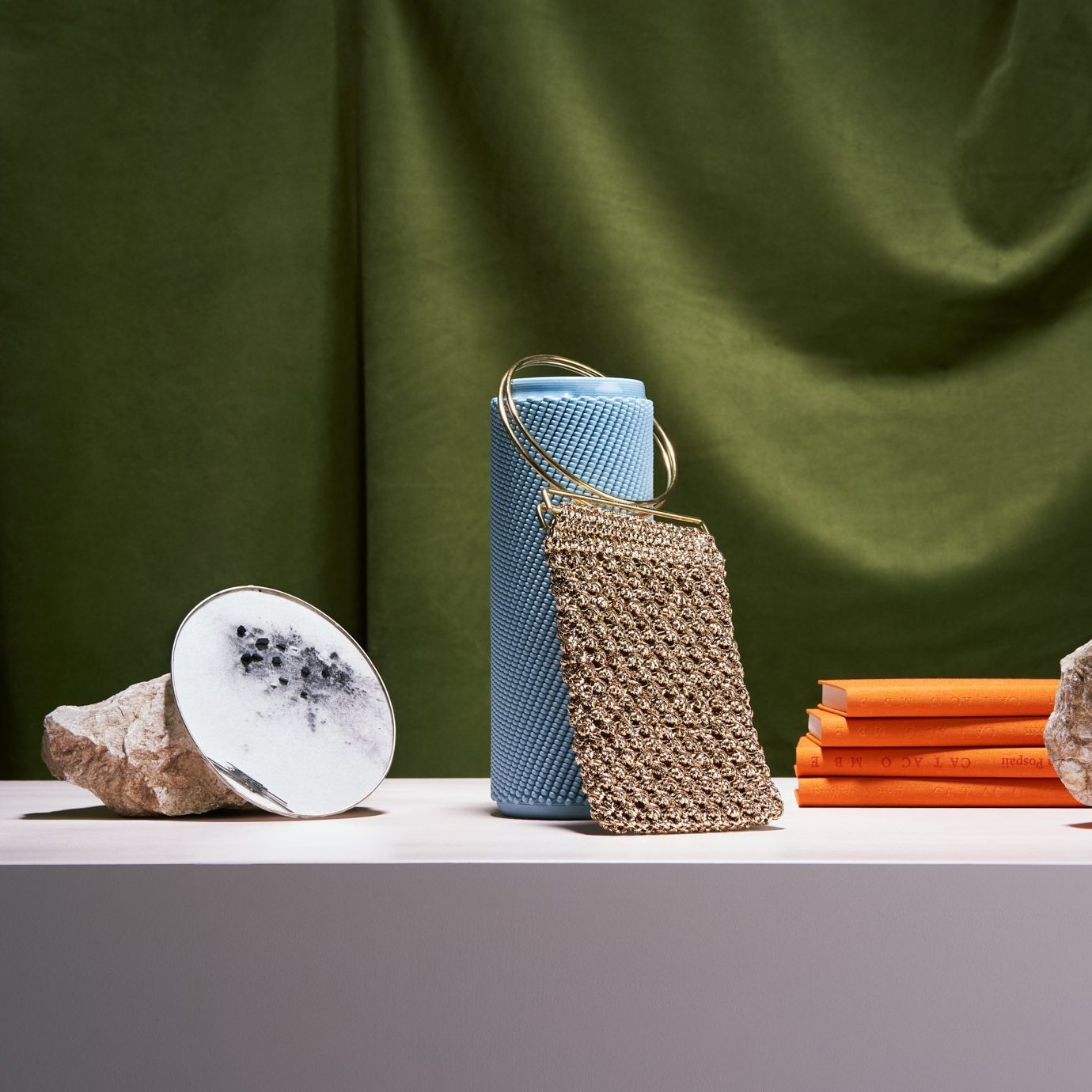

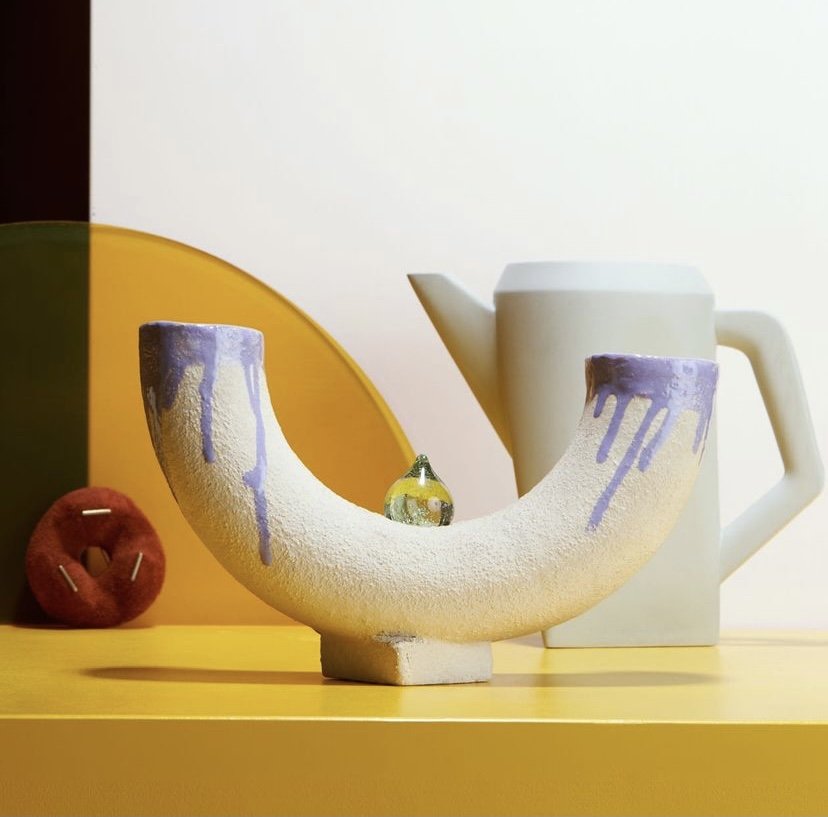

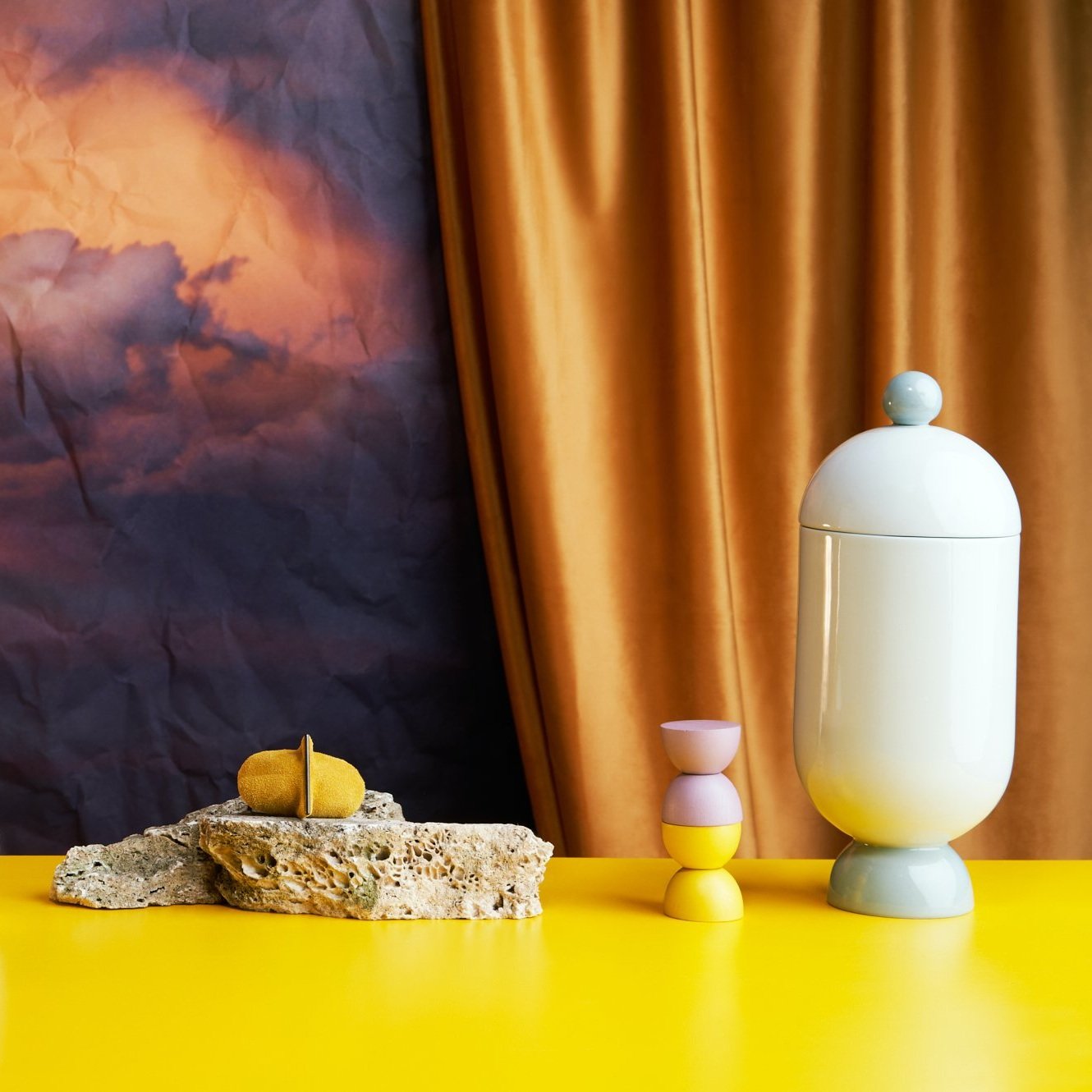
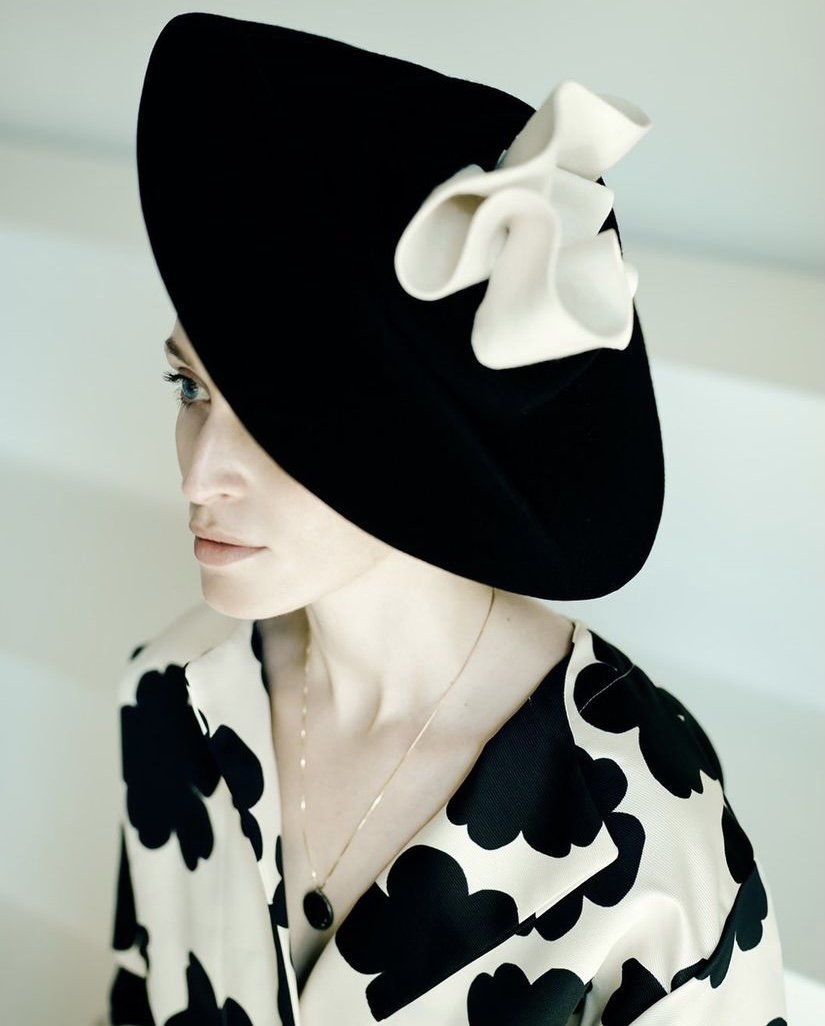




Going back in time to your childhood, what was Adela dreaming of becoming as an adult?
I always wanted to be an architect, even if my aunt, an architect herself, was begging me not to do so because it would be overwhelming. Nevertheless, since that day, I couldn't imagine myself becoming something else. In my heart, I always knew I would find my way to enjoy it, despite the challenges. And in the end, I knew it was my way of making sure that in this life I will create. I remember when I was a child, my grandmother would pick me up from school and on our way home I was looking at my favourite buildings, at their details, some of them had their display windows changed, some of the houses had new flowers. I think that I was always interested in people, society in general. I still believe we should all take a moment and observe more, like we used to do in our childhood.
We often tend to take certain paths in life under the influence of our family, friends, economic situation, etc… and we seldom know and listen to our true desires at an early age. How do you relate to this?
I was supported by my family and raised by them in a loving manner — I do believe this is one of my biggest gratitudes in life. I was raised in an educated family, with my grandmother and grandfather who both had post-graduate diplomas, which was not common in the eastern Europe of the 50s, and they both raised four beautiful children during communist times, who saw the sea during the summer and the mountains during the winter. I do believe that education is one of the most important things in life as my grandmother taught me. My whole family studied in the field of construction, so it was easy to imagine I would one day become like them. Things may have changed when I started to develop my interest in poetry, arts, or history and decided that architecture would give me a wider perspective in life. Heritage matters. Looking back, I understand more why I made those decisions. What I learned in this journey is that life is showing us in infinite ways that we are our own masters. We all have a past and we all have choices, it is up to us to transform them into opportunities.
Art and beauty are in the centre of your work. Who educated you in this direction, who or what influenced your aesthetics?
I will always be grateful for having my grandmother. She is my biggest inspiration, my greatest influence in life, the reason I enjoy creating. She draws all the time, keeping a detailed journal of the everyday life though her sketches. Every time I start a project, I have her infinite courage in my mind, she is one of the most courageous people I know. Probably, I am just here to teach others what she taught me, “to enjoy life and leave your mark in this world.” She is my soul heritage.
What is Adela’s definition of beauty?
When things look good, they feel good. A beautiful person is not just somebody who is beautiful but somebody who feels beautiful. It is not about the right hair length or the perfect skin, but rather about love despite our flaws. Vulnerability is beautiful. Authenticity is beautiful. Saying “I’m sorry” is beautiful. Men who cry are beautiful. Scars and tears are beautiful. The way light enters our homes or lives is beautiful. We just have to open the curtains and we will all discover our own definition of beauty.
You have studied architecture and decided to focus more on interior design by choosing a niche way to do it: through a gallery. How do you manage to thrive and be inspired in a domain that is so new?
I still don’t know how it would have been if this were a domain that would have had a longer history or tradition, or how this would have changed this generation of gallerists. Supporting young designers that are my age and working with them feels natural to me. Creating with them and being part of the process are probably my favourite things about this profession. I try to remain open. I am not even trying to be up to date, I think I’m more checking with myself if what I’m trying to achieve is part of who I am. I always loved books and magazines and people in general and I believe that by reading we can understand more, broaden our horizons to see that finally inspiration is everywhere.
On which criteria do you choose the artists for the Epretext Gallery?
I’m always searching for new designers. I’m attracted to beautiful objects, but in the end I work with people and I want to make sure we have that gallerist-designer chemistry.
What is your relationship with jewellery and which are your top three favourite jewellery pieces from The Sense of Beauty gallery?
I wear them everyday and I still believe jewellery makes the most beautiful gift we could offer to ourselves or to our loved ones. Heritage Collection is so sublime and feminine and I would choose the Heritage Necklace Silver and Heritage Bracelet Silver. I love the new addition of jewellery from Maria Paltin, the Oleandor Brooch is so beautiful. It’s easy to have a top three when everything is already beautifully curated.
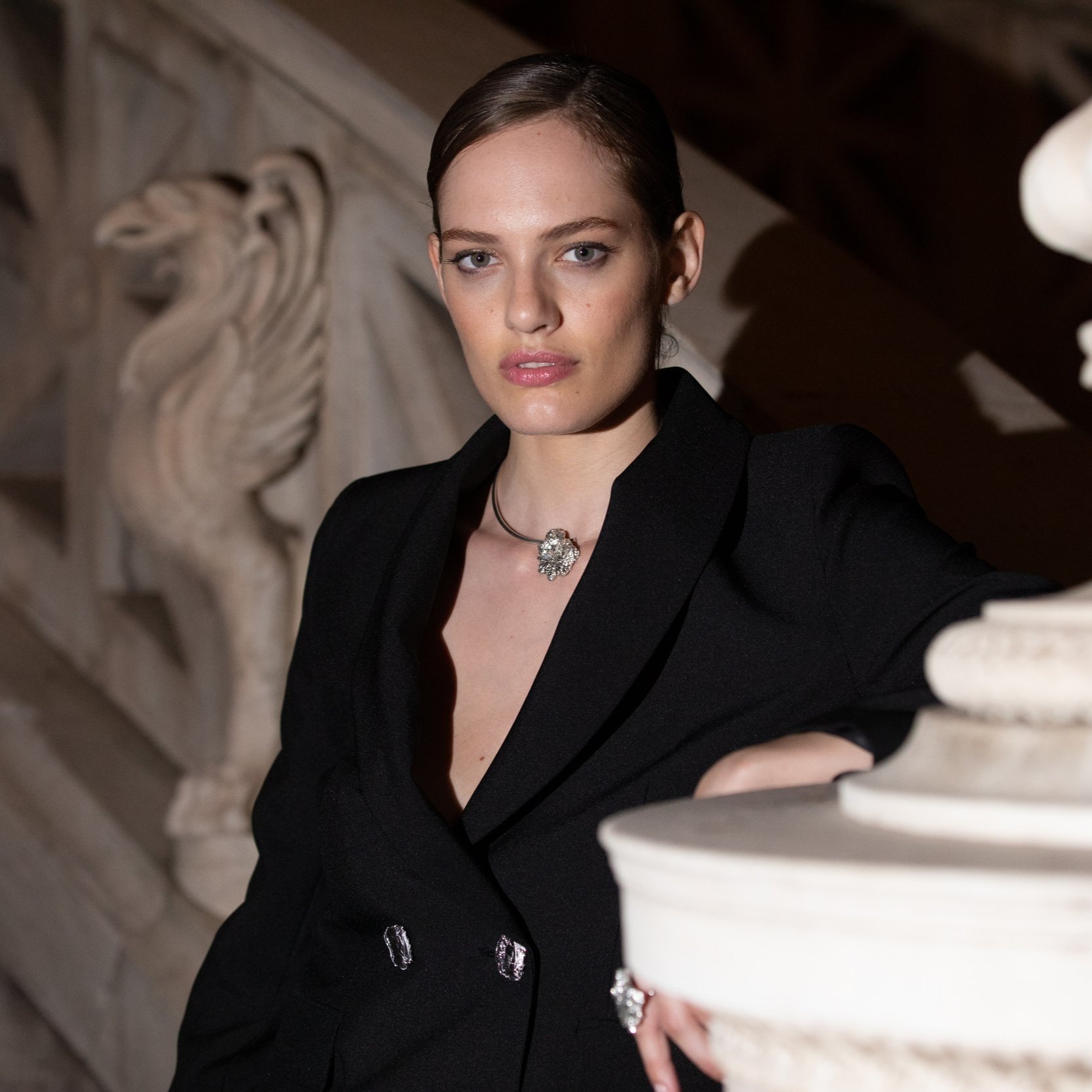
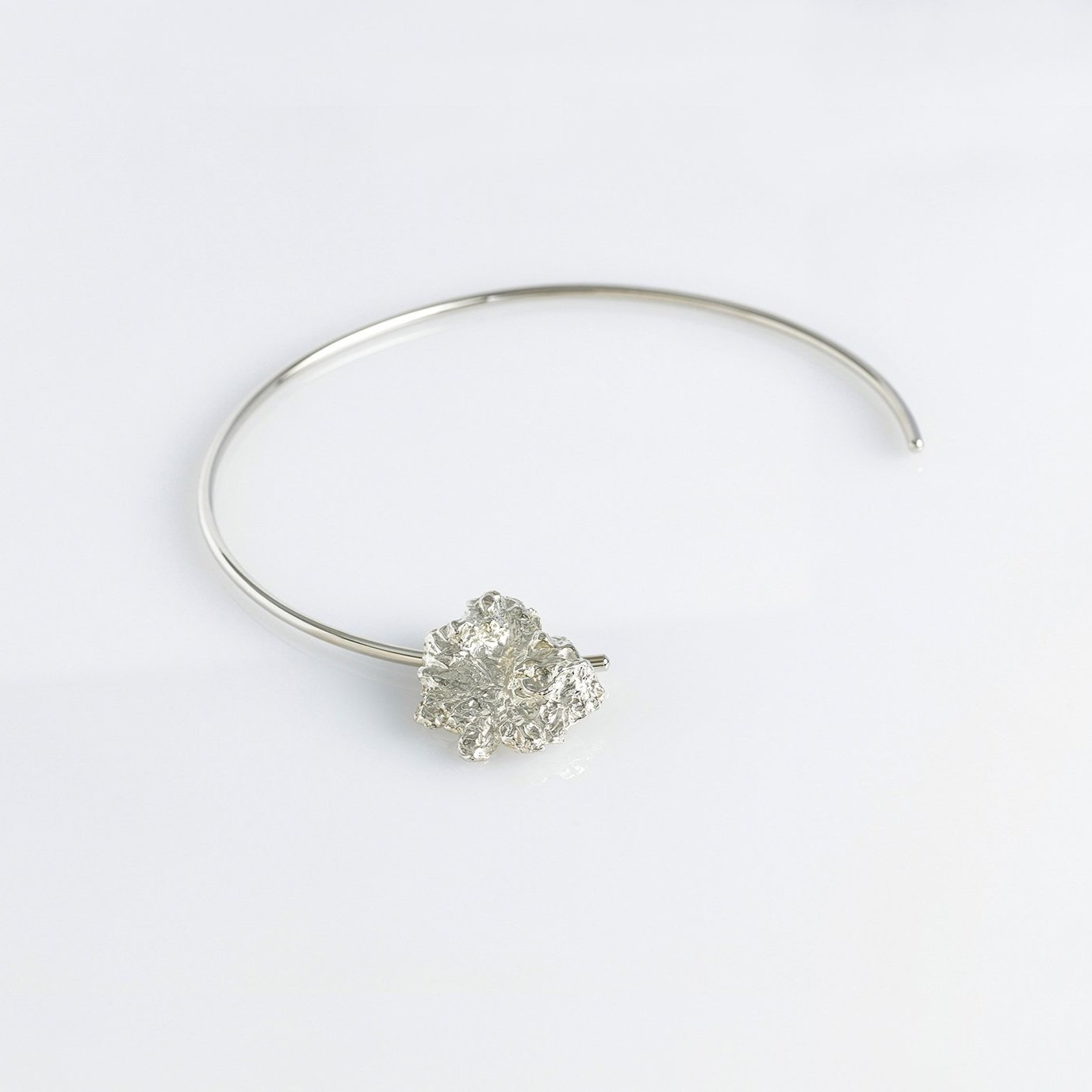
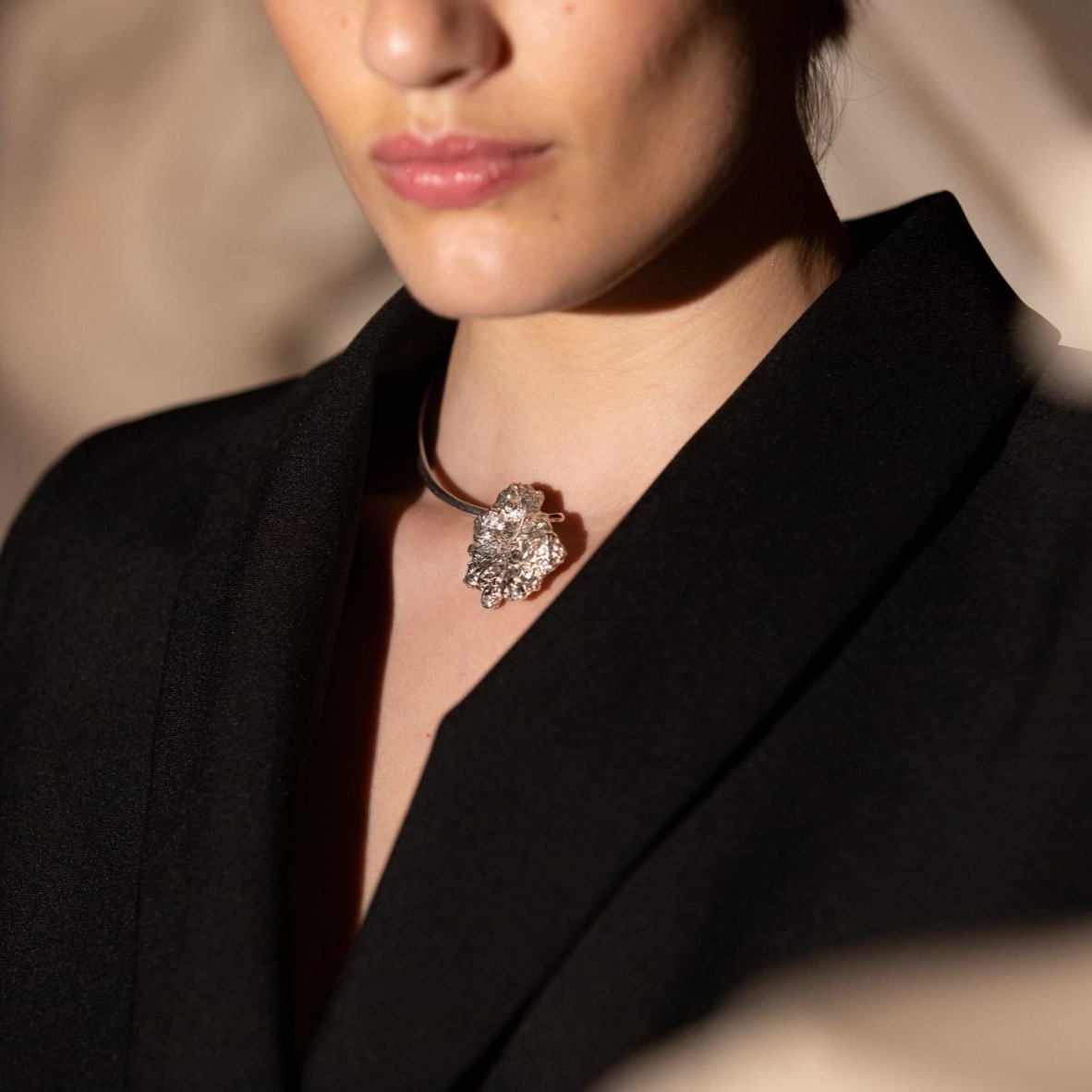
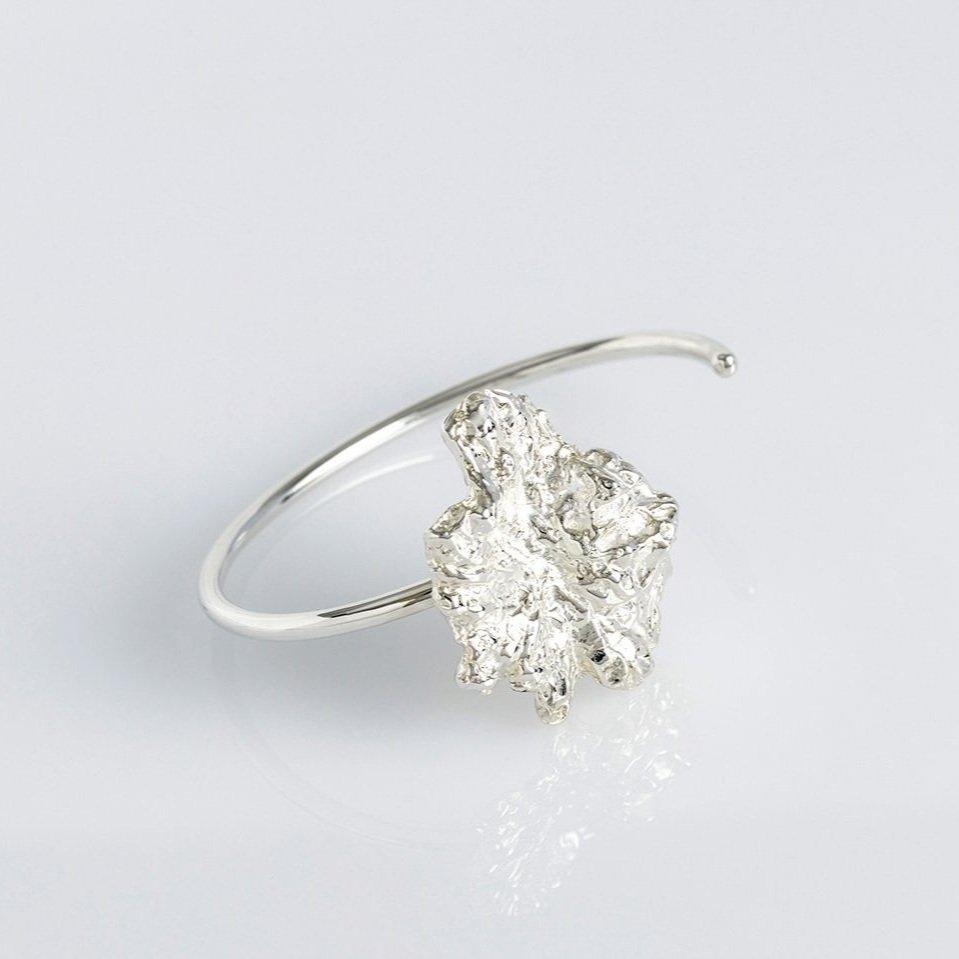
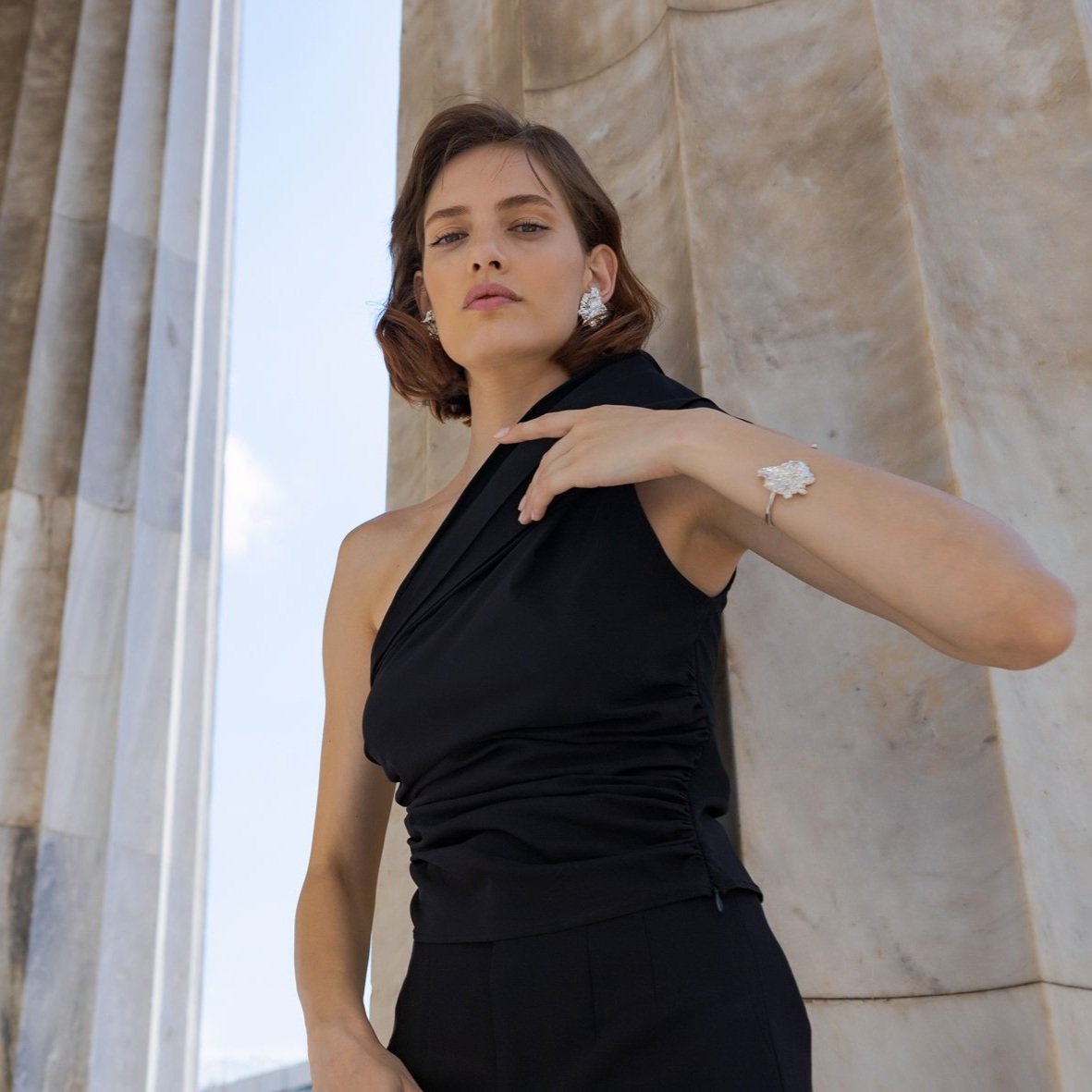

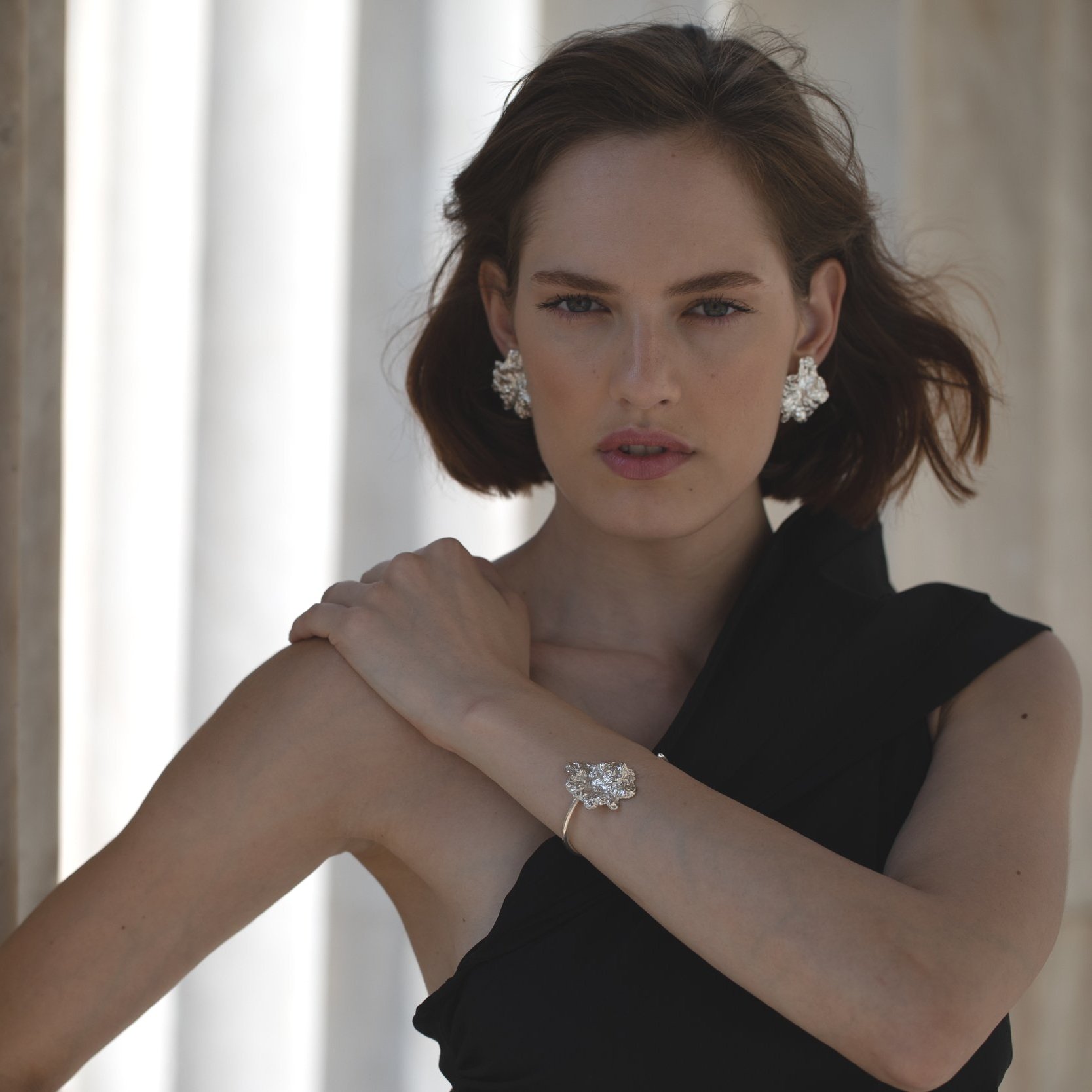
A great Romanian actor (and apparently Mother Theresa, too) once said: in life, meetings are the most important. How do you feel about it when you look at your own life?
Andrei is my biggest supporter and has always been, and meeting him changed my life. We had the same interests from the beginning and loved working together from day one. As always, communication helps to balance between private time and work. We love to work together, but then we also love to relax totally.
How do you dream about future? Where will Adela be in an ideal world? Will there still be Epretext?
I hope to allow myself to be inspired by this world constantly, to create and have the courage to be myself no matter the project name. I think that right now this is my ideal world and I wouldn’t change anything. I hope my sense of harmony will make the world better, at least for one second.
Photos: Christian Tudose, Raluca Margescu
